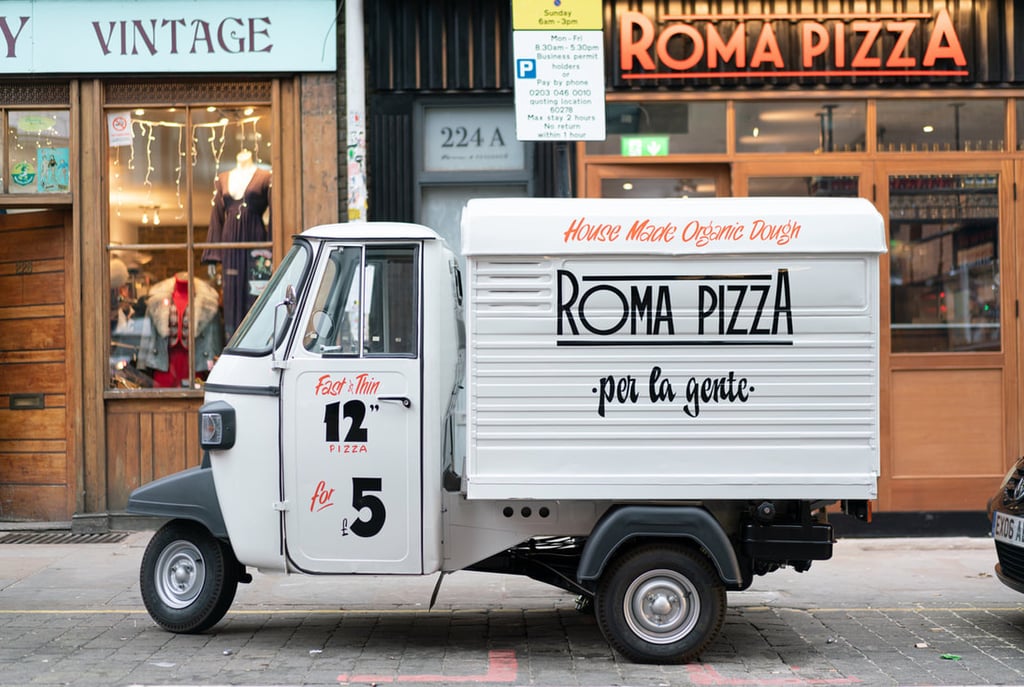The Piaggio Ape 3 Wheeled Moped: 'Il mezzo più amato d'Italia
Piaggio Ape, a three-wheeled moped, was first introduced in 1948 to cater to the need for a compact, economical, and efficient mode of transportation in post-World War II Europe. It has continually evolved while retaining its unique design and has become a cultural icon in its own right. The Piaggio Ape enjoys widespread usage internationally, and its enduring popularity testifies to its ability to cater to diverse needs. The design is not merely a stylistic choice but serves practical purposes, ensuring stability while offering a compact structure.
VINTAGE MOPEDS3 WHEELED MOPEDSPIAGGIOITALY 1940'STWO STROKE
11/3/20233 min read


Piaggio Ape: Italy's Most Beloved Means of Transport
Historical Evolution of the Piaggio Ape
The Piaggio Ape, an iconic three-wheeler, took its first steps into the world back in 1948. A brainchild of the Italian company Piaggio, this revolutionary vehicle was designed with the aim to cater to the post-World War II Europe's need for a compact, economical, and efficient mode of transportation. Interestingly, it was named 'Ape', which translates to 'bee' in Italian, chosen for its small size, buzzing sound, analogous to a hardworking bee's ability to carry heavy loads. The original model was equipped with a 50cc two-stroke engine, limiting its top speed to 43 km/h (27 mph) and enabling a payload capacity of 200 kg (440 lbs). Due to its 50cc engine size, the Piaggio Ape is classified as a legal moped.
Technical Specifications of the Piaggio Ape
In terms of technical specifics, the Piaggio Ape has continually evolved while retaining its unique design. The vehicle is quite distinct from traditional vehicles, being a three-wheeler with a compact, cab-forward design. Originally equipped with a 50cc two-stroke engine, its modern variant, the Piaggio Ape Auto DX, comes with a 598 cc engine and a Gross Vehicle Weight (GVW) of 753 kgs, and a wheelbase of 1920 mm. The utility of the Ape is enhanced by its technical specifications, providing the performance needed for the varied applications it is used in. Most importantly, its 50cc engine size, which has remained constant throughout its iterations, has categorized the Piaggio Ape as a legal moped. This implies that it can be driven without a standard driver’s license in many jurisdictions.
Variants and Usage of the Piaggio Ape
One of the distinguishing factors of the Piaggio Ape is the myriad of variants released over the decades, each catering to specific uses. The versatility of the Ape is clearly demonstrated by its adaptability to different industries and tasks. A defining feature of the Ape is its customization capabilities, offering businesses the ability to choose from various body types, like open or closed cabins, pick-up beds, and cargo boxes, depending on their specific needs. This has made the Ape a preferred choice for a diversity of businesses. From street vendors and food truck operators to cargo transporters, the Ape's design caters to their respective requirements robustly. Furthermore, notable variants over the years include Ape TM, Ape 50, Ape Cross Country 50, and the Ape Classic, each with distinctive features.
Cultural Significance of the Piaggio Ape
The cultural significance of the Piaggio Ape cannot be overstated. In the local communities, the Ape has become intertwined with their daily life, often serving as the backbone of many small-scale businesses. Its ubiquitous presence on the streets, buzzing sound and characteristic design have deeply ingrained in the local culture, furthering an unusual affection and a sense of nostalgia towards the vehicle. The Ape also enjoys significant representation in popular culture, often being associated with the image of picturesque Italian landscapes, bustling markets, and lively city streets. Its significance extends beyond a mere transport or utility vehicle, emerging as a cultural icon in its own right.
Global Influence of the Piaggio Ape
The global impact of the Piaggio Ape is formidable. From the narrow streets of Italy to the bustling markets in India, the Ape enjoys widespread usage internationally. Not just restricted to transportation, it has been adapted to the unique local contexts, further enhancing its appeal. Its enduring popularity in Europe and Asia testifies to its ability to cater to the diverse needs of these regions. Whether it's a compact, durable vehicle required for unsure terrains or a mobile setup for a local business, the Ape has tackled it all. An internationally recognized symbol of utility and innovation, it has effectively transcended borders, securing its place in the global automotive landscape.
Iconic Design Elements of the Piaggio Ape
At a glance, what sets the Piaggio Ape apart from other vehicles is its unique three-wheel configuration. The design is not merely a stylistic choice but serves practical purposes. Ensuring stability while offering a compact structure, it addresses specific needs such as maneuvering narrow lanes, ensuring ease of parking, and more. Furthermore, its cabin structure add to its charm while enhancing functionality. The van, pickup and autorickshaw body styles, cater to varied uses, making it an indispensable part of many businesses. The overall aesthetic is timeless, managing to retain its charm throughout the decades. As a crucial piece of automotive history, the design of the Ape isn't something that can be forgotten easily.
